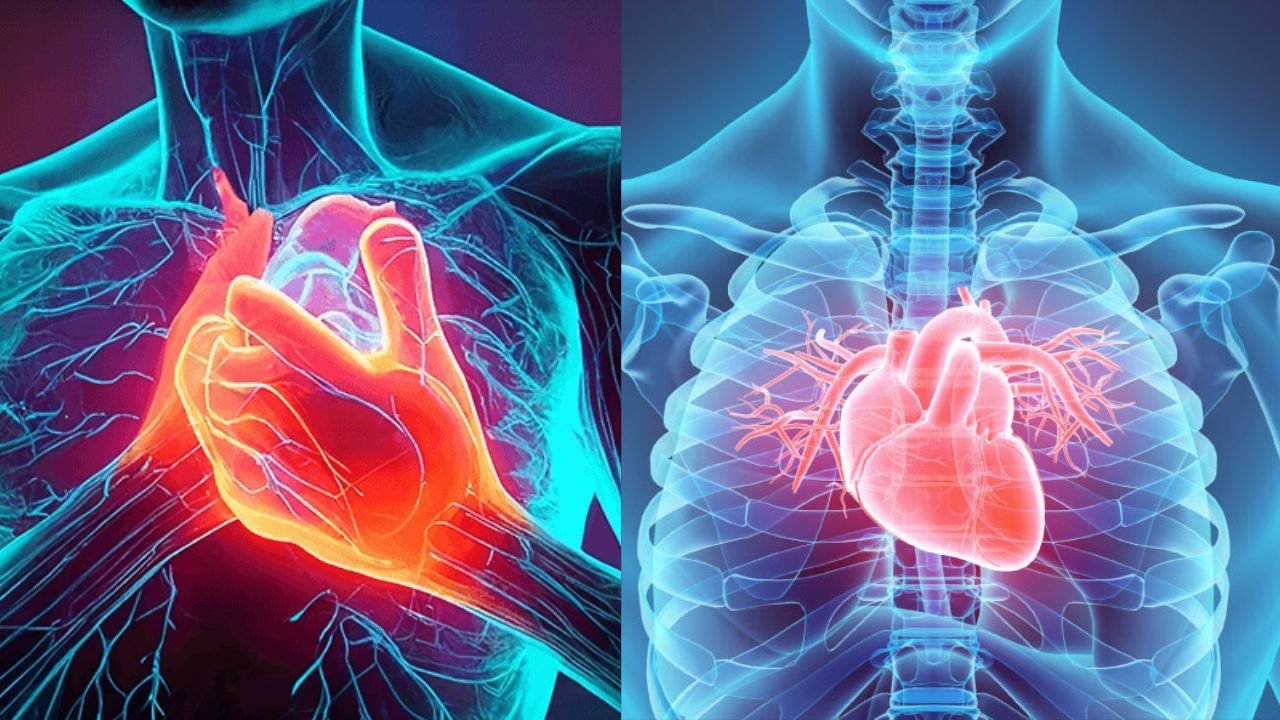Heart attack: Nowadays most people are more addicted to outside food. From continental to Chinese people’s preference. Biryani is the first choice of most people. There are also rolls and noodles. But they are very harmful for the body. Prevents various diseases. Today’s report is going to be like this. Please read the whole thing. Let’s begin.
First of all hello, I am Aindri. We try to present new interesting reports daily. So we have a special request to be by your side. Let’s begin.
In medical terms, a heart attack is a myocardial infarction. The heart muscle needs oxygen to survive. A heart attack occurs when the blood flow carrying oxygen to the heart is reduced, that is when the blood supply to the heart is suddenly stopped due to a blood clot.
A lack of blood can seriously damage the heart muscles, which is very risky.
According to the Australian Heart Foundation, the symptoms of a heart attack vary from person to person. In many cases, the classic or traditional symptom of a heart attack may not be chest pain.
Symptoms of a heart attack-
- Sometimes, a feeling of pressure across the chest, chest pain, or discomfort is the main symptom of a heart attack.
- Another important symptom of a heart attack is shortness of breath.
- Nausea and dizziness can also be early symptoms of a heart attack.
- Unexpected sweating is a prominent heart attack symptom that should never be ignored.
- Irregular heartbeats should never be ignored.
- Pain in the arms, neck, back, or jaw can also be a warning sign of a heart attack.
- Pain in the ankles or swollen feet can be a sign of a heart problem.
- One of the symptoms of a heart attack is a change in the color of the skin around the lips or fingers. This problem can usually occur due to a lack of oxygen in the bloodstream, known as cyanosis.
- Problems like indigestion, which people ignore, can be a sign of a heart attack.
Also Read: A Decade of Epilepsy Ends: Revolutionary Treatment Brings Hope
Causes of heart attacks:
- Genetic: People who have a family history of heart attacks or heart disease are more likely to have a heart attack.
- Age: People aged 65 and older are more likely to have a heart attack.
- Gender: Men are more likely to have a heart attack than women.
- Smoking: Smokers are 24 times more likely to have heart disease than non-smokers. Non-smokers exposed to secondhand smoke also have an increased risk of heart disease.
- High blood cholesterol: As blood cholesterol increases, the risk of heart disease also increases. A person’s cholesterol levels are also affected by age, gender, heredity, and diet.
- High blood pressure: High blood pressure puts strain on the heart. It increases your risk of stroke, kidney failure, and heart failure.
- Obesity: Excess weight increases the work of the heart. People with excess body fat are more likely to have a heart attack or stroke.
Tests:
- Electrocardiogram: An electrocardiogram or ECG test shows any changes in your heart.
- Blood test: After the heart is damaged due to a heart attack, certain heart proteins gradually leak into the blood. These proteins can be tested in a blood test.
- Chest X-ray: A chest X-ray shows the condition of the heart and lungs.
- Echocardiogram: Sound waves or ultrasound create pictures of the heart moving. An echocardiogram detects whether any part of your heart is damaged.
- Coronary catheterization: A long, thin tube called a catheter is inserted into an artery, usually in the leg, and guided into the heart to assess the condition of the heart.
Treatment:
Routine management of a heart attack will require hospitalization for 48-72 days, with initial ICU care within 5-7 hours. The main goal of initial treatment is to prevent damage to the heart muscle due to lack of blood supply. Blood thinners improve the blood supply imbalance and heart remodeling. The most important component of treatment is conventional thrombolytic therapy – the use of clot-dissolving drugs such as streptokinase, urokinase, or recombinant tPA to improve blood flow. Primary Percutaneous Coronary Intervention or Primary Angioplasty (PCI) – An emergency coronary angiogram is followed by balloon angioplasty with stenting, which improves blood flow.
Regular follow-up of the patient after discharge, continuation of medication, lifestyle changes, smoking cessation, physical exercise, strict control of sugar and blood pressure levels, and attention to a strict diet are essential.
Conclusions: The website is new, please stay tuned. I am trying to present the truth by gathering as much information as I can from the internet. Stay well and stay tuned. Don’t forget to give your feedback.
